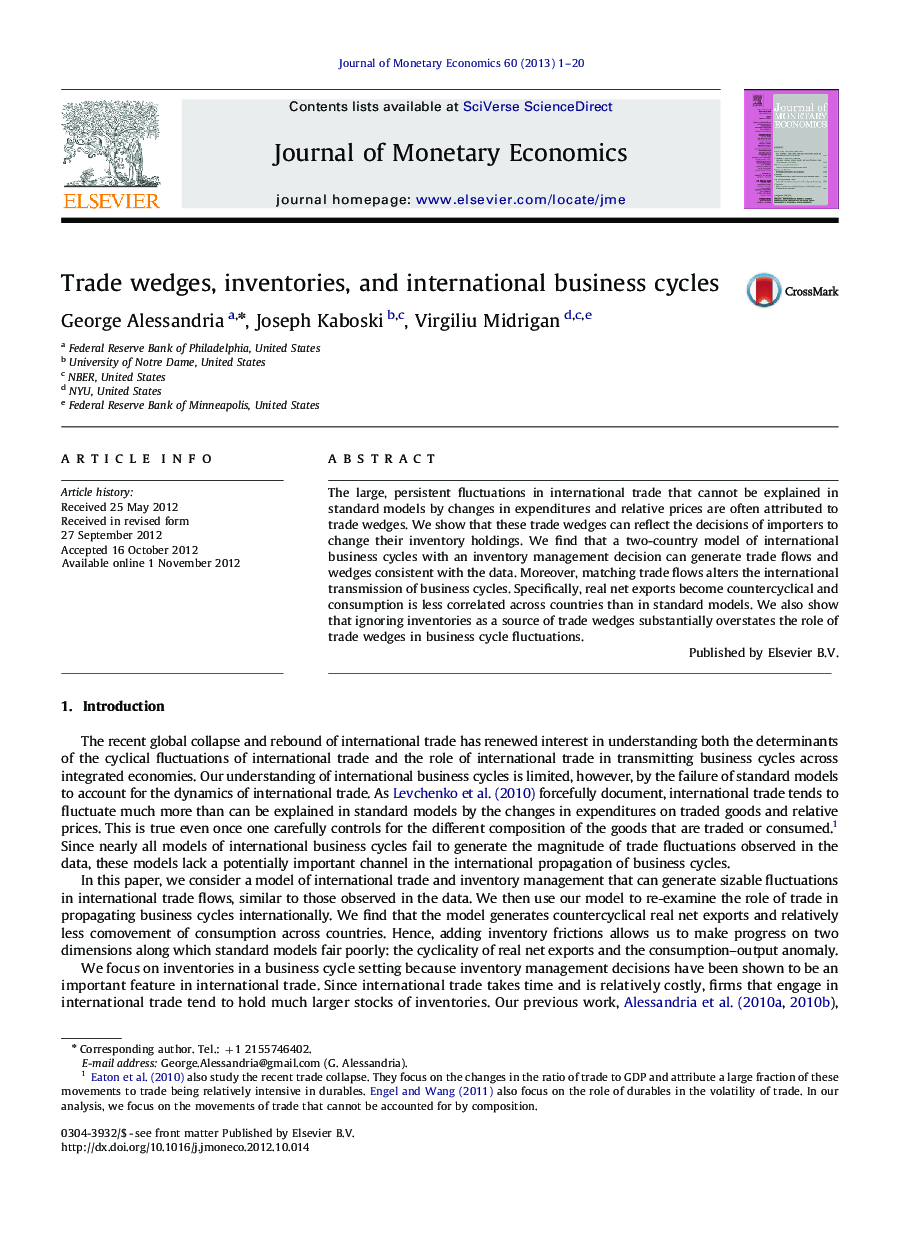| Article ID | Journal | Published Year | Pages | File Type |
|---|---|---|---|---|
| 967698 | Journal of Monetary Economics | 2013 | 20 Pages |
The large, persistent fluctuations in international trade that cannot be explained in standard models by changes in expenditures and relative prices are often attributed to trade wedges. We show that these trade wedges can reflect the decisions of importers to change their inventory holdings. We find that a two-country model of international business cycles with an inventory management decision can generate trade flows and wedges consistent with the data. Moreover, matching trade flows alters the international transmission of business cycles. Specifically, real net exports become countercyclical and consumption is less correlated across countries than in standard models. We also show that ignoring inventories as a source of trade wedges substantially overstates the role of trade wedges in business cycle fluctuations.
► We show that trade wedges can reflect inventory adjustments by importers. ► We build a two-country model of business cycles with an inventory management decision. ► The model generates trade flows and wedges consistent with the data. ► Real net exports are countercyclical and consumption is less correlated across countries. ► Ignoring inventories overstates the role of trade wedges in business cycle fluctuations.
